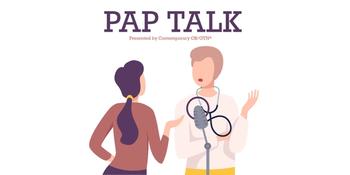
Pap Talk: The impact of environmental exposures on women's health
From safe baby products to helping your patients become educated consumers, Huffling's insights are valuable across practices.
KH: I am Katie Huffling, I am the executive director of the Alliance of Nurses for Healthy Environemnts and we're the only national nursing organization who focuses primarily on the intersection of health and the environment. I'm also a nurse midwife, and my interest in environmental health was really born from a greater recognition of how the environment can impact reproductive health. It's kind of been woven throughout my career as a nurse midwife.
Q: What are some of the key points providers should know in terms of environmental exposures and women's health?
KH: No matter what area of health care you're in, [or] what your profession is, whether you're a nurse, advanced practice, nurse physician, most of us haven't had very much environmental health education. It's a really underutilized area of health care, where we have such an amazing opportunity to help prevent disease, and to help our patients have much better outcomes.
When we look at environmental exposures and things that our patients can be exposed to, whether it's at home or at work, or just out in the environment, we can have such an amazing impact on their health.
Q: What are the most prevalent environmental issues right now in terms of women's health?
KH: I would say, right now, one of my main areas of interest is around climate change. There's a growing consensus that climate change is the most pressing public health issue that we currently face. But conversely, it's also the greatest opportunity. Because when we address climate change, there's so many different aspects to health that we're able to touch upon.
Within climate change, things that are associated with that are things like air pollution, extreme heat, greater areas for vector borne diseases, issues around water--like flooding and drought, wildfires--there's just so many different components and depending on the age of your patient, whether it's newborns, elderly people, [or women of] reproductive age, they have different health impacts depending on [not only] their age, but also if they have chronic diseases.
For example, with air pollution, we know that when the temperature goes up, the air quality goes down. When we're having more high-heat days, we're having more poor-air-quality days.
So [for] patients that have respiratory issues or cardiac issues, if they're outside on these poor-air-quality days or don't have access to...good indoor air quality, they can be more likely to end up in the emergency room [with] respiratory issues or cardiac issues.
As health professionals, I think we have a moral obligation to be talking to our patients about ways to reduce exposures. Using air pollution as an example, there's a tool called
We also need to be getting involved in advocacy, because climate change is a huge issue. While individual actions are really important, we really need to be talking with our elected officials and with policymakers, and helping them make that connection between health and climate change and [let them know that] when they're taking these climate actions, that they're really improving the health of their constituencies.
Q: What are some important findings from the benchmark Body Burden studies?
KH: About 15 years ago,
Many of these are associated with health impacts, like neurological issues, such as autism and ADHD, developmental issues, things that we're seeing rising rates of. I don't think it's the whole picture on why some of these different diseases and ailments are arising, but I think it's a component of why we're seeing that.
Q: How can providers counsel their patients on limiting environmental exposures?
KH: One tool that I talked about in my talk is the Safe Baby Products Guide. It's a really awesome resource for new parents and parents-to-be, talking about some of the common, more toxic chemicals that may be found in different baby products--whether it's mattresses, strollers and carriers, or other products that you might be using with babies.
I think it's really great to help them start thinking about what could be in products, so they become more educated consumers. [It also] provides some examples of products that are safer.
It also talks about affordability. Because one thing that's been really challenging for a lot of our lower income patients [is that] safer products have been out of reach. This is a real environmental justice issue Because of your income or where you live, you shouldn't have only access to more toxic products. So, as part of that guide, we provide guidance on choosing more inexpensive, safer products, where to look for those and ways that [families with limited funds] can be pulling their nursery together.
Newsletter
Get the latest clinical updates, case studies, and expert commentary in obstetric and gynecologic care. Sign up now to stay informed.






